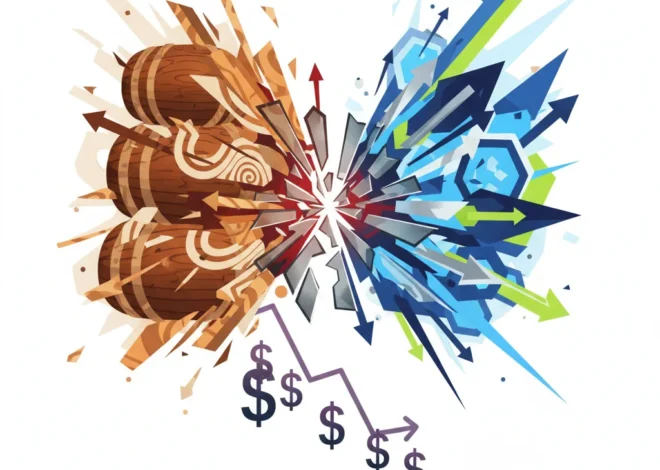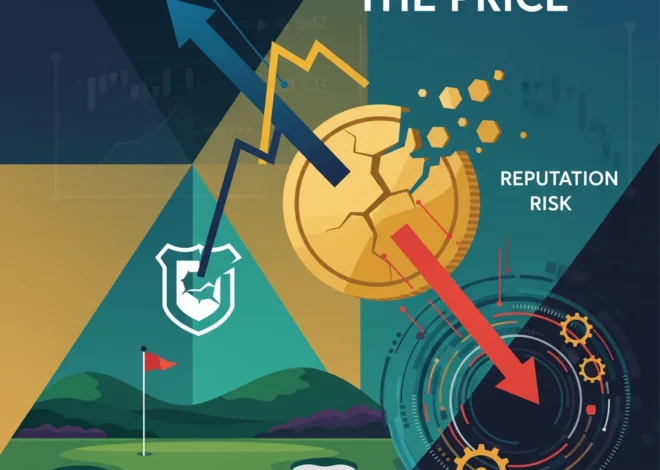
The Pizza Hut Paradox: A Financial Autopsy of a Fallen Giant
The End of an Era: Why Pizza Hut is Serving Its Last Slice
There was a time when the red roof of a Pizza Hut was a cultural beacon. It symbolized family outings, birthday parties, and the simple joy of a “Book It!” program reward. For decades, it dominated the casual dining landscape. Yet, today, that red roof is fading. The recent news that Pizza Hut is closing half of its UK restaurants is not an isolated event but the culmination of a long, slow decline. For investors, finance professionals, and business leaders, the story of Pizza Hut is more than just a tale of changing pizza preferences; it’s a profound case study in corporate stagnation, market disruption, and the brutal economics of consumer loyalty.
This isn’t just about pizza. It’s a cautionary tale about the perils of failing to adapt in a rapidly evolving economy. To understand how the nation lost its appetite for Pizza Hut, we must dissect the financial, technological, and cultural forces that have reshaped the entire food and beverage industry. From the stock market performance of its parent company to the rise of fintech-powered delivery platforms, every slice of this story offers a valuable lesson.
A Tale of Two Business Models: The Dine-In Dinosaur in a Delivery World
At its core, Pizza Hut’s struggle can be attributed to a fundamental mismatch between its legacy business model and the modern consumer. The company was built on the dine-in experience—the all-you-can-eat buffet, the salad bar, the family-friendly restaurant environment. This model was incredibly successful in the 20th century but has become an albatross in the 21st.
The modern pizza market is dominated by two key factors: convenience and value. Competitors like Domino’s and Papa John’s built their empires on a lean, delivery-centric model. They invested heavily in logistics, online ordering systems, and a franchise structure that prioritized speed and efficiency. This approach has several key financial advantages:
- Lower Overhead: Fewer large, expensive restaurant locations mean lower rent, utility, and staffing costs.
- Scalability: A delivery-focused model is easier and cheaper to scale through franchising.
- Data-Driven Operations: Digital-first operations generate vast amounts of consumer data, allowing for targeted marketing and optimized operations—a core principle of modern financial technology.
This strategic divergence is starkly visible in the stock market. While Pizza Hut is part of the diversified portfolio of Yum! Brands (NYSE: YUM), the focused strategy of Domino’s (NYSE: DPZ) has often been rewarded by investors who value its technological edge and market adaptability. The lesson for anyone involved in finance or investing is clear: a company’s physical footprint and operational model are critical indicators of its ability to thrive in a digital economy.
The Ultimate Risk Analyst: What Investors Can Learn from War Photographer Lynsey Addario
Let’s compare the operational focus of the key players in the pizza industry. The differences highlight the strategic challenges Pizza Hut has faced.
| Feature | Pizza Hut | Domino’s Pizza | Local/Gourmet Pizzerias |
|---|---|---|---|
| Primary Model | Hybrid (Dine-in & Delivery) | Delivery & Takeaway Focused | Dine-in & Local Delivery |
| Real Estate Footprint | Large, high-cost restaurant sites | Small, low-cost storefronts | Varies, often in high-footfall areas |
| Technological Investment | Lagged in early digital adoption | Pioneered online/app ordering | Reliant on third-party apps |
| Brand Perception | Nostalgic, family casual dining | Fast, convenient, value-driven | Authentic, high-quality, premium |
The Unseen Disruptor: How FinTech Ate Pizza Hut’s Lunch
While direct competition played a significant role, an even greater disruptive force came from outside the pizza industry: the rise of financial technology (fintech) and the platform economy. Companies like Uber Eats, DoorDash, and Deliveroo are not just food delivery services; they are sophisticated logistics and fintech platforms. They revolutionized the restaurant industry by:
- Aggregating Choice: They offered consumers access to hundreds of local restaurants, not just the big chains, through a single app.
- Streamlining Payments: They created a seamless, cashless transaction experience, fundamentally changing the banking and payment process for takeaways.
- Providing a Delivery Infrastructure: They allowed smaller, independent restaurants to compete with the giants on delivery without needing to invest in their own fleet or technology.
This tech-driven shift completely dismantled Pizza Hut’s competitive moat. Their extensive network of physical restaurants, once a major asset, became a liability. The convenience they once offered was dwarfed by the near-infinite choice and on-demand service provided by the app-based economy. For a legacy company, competing with this new ecosystem required a level of investment in financial technology and digital transformation that they were slow to make. According to a report by McKinsey, the global food delivery market has more than tripled since 2017, a testament to the power of this new model.
Forward-thinking companies are now exploring even more advanced technologies. Imagine a future where blockchain is used to provide complete transparency in the food supply chain, allowing a customer to scan a QR code on a pizza box and see the origin of the tomatoes and cheese. This level of innovation in transparency and quality assurance is where the market is heading, and it’s a world away from a tired salad bar.
A Green Giant Stumbles: Why Vestas' Polish Pause Signals a Storm for European Wind Energy
Economic Reality Bites: Inflation and the Squeezed Consumer
The final nail in the coffin has been the macroeconomic environment. Soaring inflation and a cost-of-living crisis have profoundly impacted consumer behavior. In this new era of careful spending, discretionary purchases like eating out are often the first to go. A report from the Office for National Statistics highlights the persistent pressure on UK household budgets.
This economic pressure creates a polarized market. Consumers either seek out the absolute best value—a cheap, quick pizza from a delivery-focused chain—or they save up for a truly special, high-quality dining experience. Pizza Hut’s mid-range, casual dining offering falls directly into the squeezed middle. It’s too expensive to be a budget meal but not special enough to be a celebratory one. This economic reality has accelerated its decline, forcing the closure of underperforming locations as the parent company, Yum! Brands, seeks to protect its overall financial health and stock market valuation.
For those engaged in economics and financial analysis, Pizza Hut’s situation is a textbook example of how macroeconomic trends directly translate into microeconomic pain for specific business models. The company’s inability to pivot its value proposition left it brutally exposed to shifts in consumer spending power.
The Million-Dollar Mistake: Why Deferring Your Pension Is a Bet Against Your Future Self
Lessons from the Hut: A Guide for Modern Investors and Leaders
The decline of a once-iconic brand like Pizza Hut offers invaluable lessons that extend far beyond the restaurant industry. For anyone involved in investing, trading, or corporate leadership, these takeaways are critical:
- Never Underestimate Technological Disruption: Pizza Hut was disrupted less by other pizza companies and more by technology platforms that changed consumer expectations entirely. Your biggest threat often comes from outside your direct industry.
- Business Models Have a Shelf Life: The asset-heavy, dine-in model that built an empire became a financial burden. Leaders must be willing to cannibalize their own legacy models before a competitor does it for them.
- Brand Nostalgia is Not a Strategy: While fond memories can create initial goodwill, they cannot sustain a business. Brands must constantly evolve to remain relevant to new generations of consumers. As per the original report, fewer diners are simply “hitting the Hut” based on nostalgia alone.
- Know Your Place in the Economy: In a challenging economy, the middle market is the most dangerous place to be. A clear strategy focused on either value or premium experience is essential for survival.
As the lights go out in hundreds of Pizza Hut restaurants, it serves as a stark reminder that in the modern economy, no giant is too big to fail. The market is an unsentimental force, rewarding innovation and punishing inertia. For investors and business leaders, the question is not just “Who’s next?” but “Are we learning the right lessons from the fall?”


